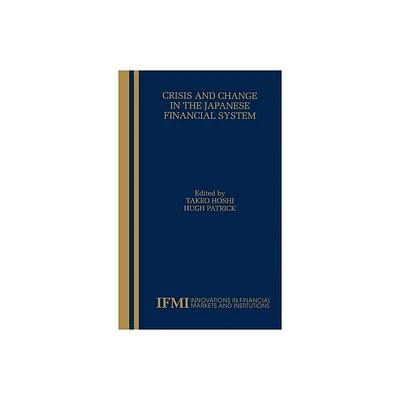Home
Macroeconomics: Institutions, Instability, and the Financial System
Loading Inventory...
Barnes and Noble
Macroeconomics: Institutions, Instability, and the Financial System
Current price: $169.99


Barnes and Noble
Macroeconomics: Institutions, Instability, and the Financial System
Current price: $169.99
Loading Inventory...
Size: OS
*Product Information may vary - to confirm product availability, pricing, and additional information please contact Barnes and Noble
Macroeconomics: Institutions, Instability, and the Financial System
integrates the modern monetary frameworkbased on the 3-equation model of the demand side, the supply side, and the policy makerwith a model of the financial system. The authors comprehensively address the limitations of the mainstream macroeconomic model exposed by the financial crisis and the Eurozone crisis. The text guides the reader through the three principal steps required to integrate the financial system within the macroeconomic model.
Every chapter emphasizes how the different actors in the economy behave and interact: what are they trying to achieve and what limits their ability to put their intentions into practice? This is extended to the modelling of growth, where the role of innovation rents in the Schumpeterian model is highlighted. It is essential that students understand previous periods of growth, stability and crisis in preparing for future shocks. With this in mind, the book enables the reader to interpret long run historical data and to compare institutional detail in different eras and across the world.
Macroeconomics
not only develops the critical thinking skills required for academic success, but ensures that students can analyze data, trends, and policy debates with the confidence necessary for a career in economics or finance. It is essential reading for all those interested in learning more about the current macroeconomic system and the role of financial institutions.
integrates the modern monetary frameworkbased on the 3-equation model of the demand side, the supply side, and the policy makerwith a model of the financial system. The authors comprehensively address the limitations of the mainstream macroeconomic model exposed by the financial crisis and the Eurozone crisis. The text guides the reader through the three principal steps required to integrate the financial system within the macroeconomic model.
Every chapter emphasizes how the different actors in the economy behave and interact: what are they trying to achieve and what limits their ability to put their intentions into practice? This is extended to the modelling of growth, where the role of innovation rents in the Schumpeterian model is highlighted. It is essential that students understand previous periods of growth, stability and crisis in preparing for future shocks. With this in mind, the book enables the reader to interpret long run historical data and to compare institutional detail in different eras and across the world.
Macroeconomics
not only develops the critical thinking skills required for academic success, but ensures that students can analyze data, trends, and policy debates with the confidence necessary for a career in economics or finance. It is essential reading for all those interested in learning more about the current macroeconomic system and the role of financial institutions.


















